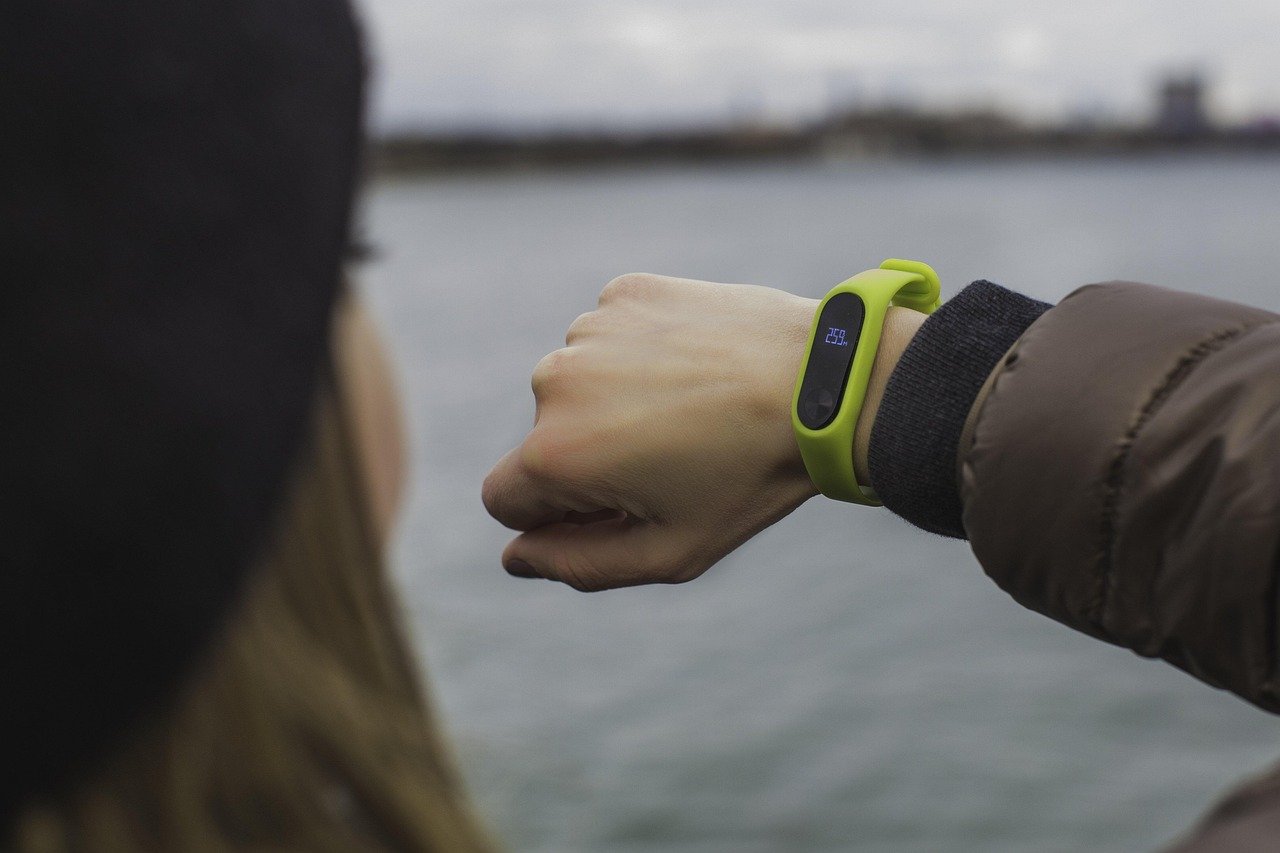Smart Glasses That Read Your Mind
Picture this: you’re walking down the street when your glasses whisper in your ear that you’ve got a meeting in ten minutes, without you even checking your phone. Snap is back with a new pair of AR smart glasses, and smart glasses with the Snapdragon AR1 Plus Gen 1 chip will support a Meta Llama AI with one billion parameters. These aren’t just regular specs with a screen – they’re reading your thoughts (well, almost). The latest models can predict when you need help and answer questions before you even ask them. Think of them as having a super-smart friend who never gets tired of your random questions. The Ray-Ban Meta smart glasses are by far the best AI wearable we’ve tested, and even on the AI’s off-days they will always be an exceptionally stylish pair of sunglasses. What’s crazy is how normal they look – nobody would know you’re essentially wearing a computer on your face.
Foldable Phones That Transform Like Origami
Remember when flip phones were cool? Well, they’re back, but this time they’re smarter than your laptop from five years ago. The new foldable smartphones aren’t just party tricks – they’re genuine game-changers for how we use our devices. You can watch Netflix on a tablet-sized screen, then fold it down to fit in your pocket like it’s nothing. These phones offer a unique aesthetic, combining the familiar features of traditional smartphones with a futuristic form factor, though both models run on Android with a non-standard version. The best part? They’re finally getting durable enough that you don’t have to baby them like they’re made of tissue paper. Some of these phones can literally roll up like a scroll – it’s like having a magic trick in your pocket that actually serves a purpose.
AI Assistants That Actually Get You
Forget asking Alexa to play your music for the hundredth time – the AI assistants coming in 2025 are basically mind readers. AI has evolved into a truly transformative force, and personal assistants in 2025 are smarter than ever, including emotion detection through voice and facial recognition and predictive actions like automatically preparing coffee based on your habits. These digital companions don’t just respond to commands; they anticipate your needs like a really good friend who’s been watching you for years. They’ll start your coffee before you realize you want it, adjust the temperature when you look a bit chilly, and even suggest taking a break when they notice you’ve been stressed. Multi-language fluency in over 50 languages makes global connectivity effortless, and these AI assistants are indispensable companions from managing your household to planning vacations. It’s like having a personal butler who never sleeps and never judges your weird 3 AM questions about whether penguins have knees.
Health Monitors That Know You Better Than Your Doctor

Your smartwatch is about to get seriously jealous of what’s coming next. Health technology has reached new heights with wearable devices capable of continuous health monitoring, including real-time diagnostics that monitor blood pressure, glucose levels, and heart rhythms in real time. These new health gadgets are like having a medical team on your wrist that never takes a coffee break. They can spot problems before you even feel sick and give you personalized advice that actually makes sense for your body. Future smart glasses may integrate sensors for health tracking, monitoring vital signs like heart rate, blood oxygen, or glucose levels, positioning them as a valuable tool for personal health management. Imagine getting a gentle nudge to drink water because your device noticed you’re getting dehydrated, or a suggestion to take deep breaths because it detected your stress levels spiking. It’s like having a health-conscious friend who actually knows what they’re talking about instead of just telling you to “drink more water” for everything.
Home Robots That Don’t Suck (Literally and Figuratively)
The robot revolution is finally happening, but these aren’t the clunky metal servants from sci-fi movies. The K20 Plus Pro is a modular smart home robot with interchangeable functionalities, from delivering an air purifier to monitoring home security, and its modularity and versatility make it a game-changer for smart homes. These robots are more like helpful roommates who happen to be made of metal and circuits. They can cook basic meals, keep an eye on your kids, remind grandma to take her medication, and even help with homework (though they’re probably better at math than you are). The modular design supports swappable functionalities, future upgrades like robot arms, and a multi-use docking system for video streaming and more. The coolest part? They learn your family’s routines and preferences, so they’re not just following pre-programmed commands – they’re actually adapting to make your life easier in ways you didn’t even know you needed.
Holographic Displays That Make Video Calls Obsolete
Zoom fatigue is about to become a thing of the past. Holographic technology has made its way from sci-fi movies into our daily lives, and in 2025, holographic displays are compact, portable, and remarkably lifelike. Imagine having a meeting where your colleague appears to be sitting right there in your living room, even though they’re actually on the other side of the world. Applications include virtual meetings where you engage with colleagues as if they’re in the same room, interactive 3D lessons that enhance learning outcomes, and immersive gaming and movie experiences. It’s not just about business meetings either – imagine watching a movie where the characters seem to be performing in your room, or playing games where the action spills out into your actual space. This technology bridges the gap between virtual and physical worlds, providing unparalleled interaction. Your Netflix binges are about to get a whole lot more immersive.
Electric Cars That Think They’re Smartphones
Cars used to be about getting from point A to point B, but the electric vehicles rolling out in 2025 are basically computers on wheels that happen to drive. Honda’s Zero Saloon and SUV models combined retro aesthetics with modern EV technology, channeling the vibes of 70s and 80s automotive designs while promising a mix of style, innovation, and environmental consciousness. These aren’t just eco-friendly – they’re smart enough to make your current car look like a horse-drawn carriage. They can update themselves overnight like your phone, learn your driving preferences, and even predict where you want to go based on your calendar. Some models come with solar panels built right into the body, so they’re literally charging themselves while you’re stuck in traffic. The steering wheel is smart enough to light up the buttons that make the most sense at just the right time, has a built-in AI assistant for navigation or changing modes, and the system is coming to all new BMWs by the end of 2025. It’s like driving a computer that’s way cooler than any desktop you’ve ever owned.
Brain-Computer Interfaces for Everyday Heroes
This is where things get really wild – we’re talking about controlling devices with your thoughts, and it’s not science fiction anymore. The most radical option has been tried by fewer than 100 people on Earth who have lived with implanted brain-computer interfaces, where implanted BCIs are electrodes put in paralyzed people’s brains so they can control a computer cursor or produce speech. While the implanted versions are still mainly for people with serious medical conditions, non-invasive technology approaches include EEG and fNIRS, and whilst non-invasive devices have an established market for brain monitoring, their potential for brain computer interfacing is yet to be realized as the technology continues to improve. Picture being able to change the TV channel just by thinking about it, or typing an email by imagining the words. Non-invasive BCIs are already making a mark with devices like Flow’s non-invasive headset targeting consumer-grade applications ranging from enhancing focus and productivity to tackling mental health problems. It sounds like magic, but it’s really just really, really advanced technology that’s finally catching up to our sci-fi dreams.
Smart Fabrics That Make Your Clothes Your Computer
Your favorite t-shirt is about to get a serious upgrade. Smart fabrics aren’t just about having LEDs sewn into your jacket – they’re turning your entire wardrobe into a wearable computer system. These textiles can monitor your heart rate, adjust their temperature based on the weather, and even change color to match your mood or outfit. Imagine workout clothes that tell you exactly how many calories you’re burning in real-time, or a jacket that warms up specific areas when it senses you’re getting cold. This is complemented by increased consumer acceptance of head-worn wearables such as hearables and AR/VR headsets. The fabric can be washed like normal clothes, but it’s basically like wearing a fitness tracker that covers your entire body. Some smart clothing can even detect if you’ve fallen and automatically call for help – it’s like having a guardian angel woven into your wardrobe.
Quantum Computing Gadgets That Break Reality
Quantum computing used to be something that existed only in university labs and tech companies’ wildest dreams, but consumer-friendly versions are starting to appear. The global brain computer interfaces market revenue is projected to grow from USD 2.83 billion in 2025 to reach USD 8.73 billion by 2033, growing at a CAGR of 15.13%. While you won’t be gaming on a quantum computer anytime soon, these devices are starting to show up in specialized applications that could affect your daily life. Think of them as super-powered problem solvers that can crack encryption, optimize your commute in ways regular computers never could, and help discover new medicines. The quantum processors coming to market are like having a crystal ball that can calculate millions of possibilities simultaneously. They’re still pretty niche, but just like how smartphones seemed impossibly futuristic twenty years ago, quantum gadgets are starting their journey from lab curiosity to mainstream reality. You probably won’t own one directly, but you’ll definitely benefit from what they can do behind the scenes.
These ten gadgets represent more than just cool tech – they’re glimpses into a future where the line between science fiction and daily reality keeps getting blurrier. By the end of 2025, at least a few of these will probably seem as normal as checking your smartphone. What would you have guessed would be possible just five years ago?

